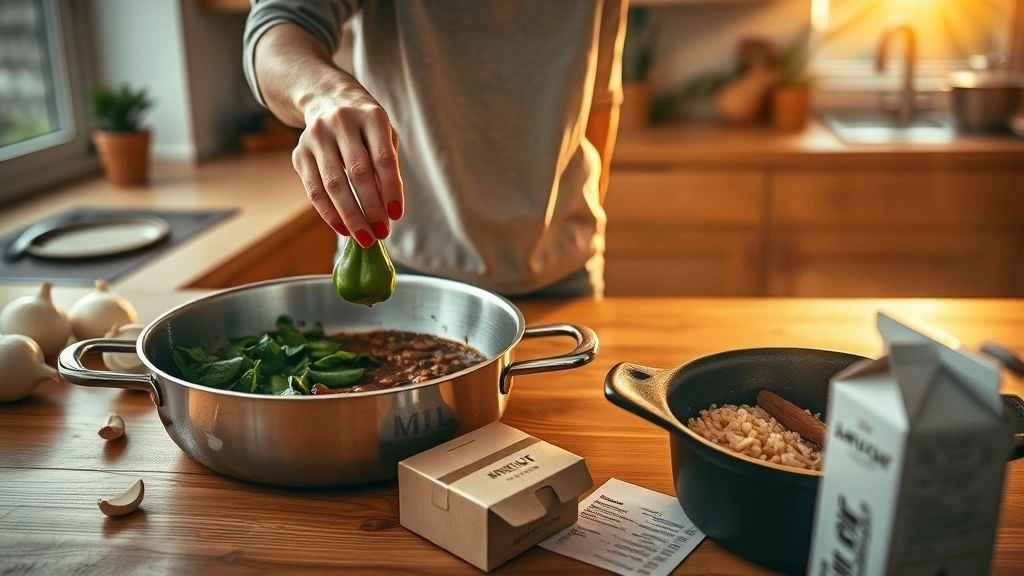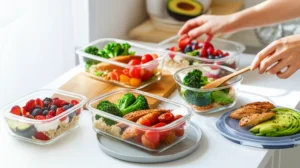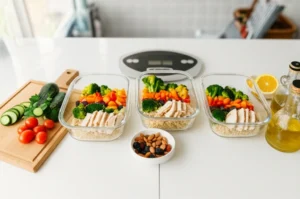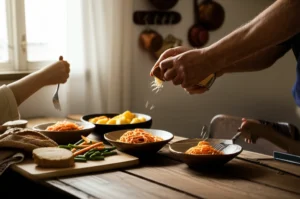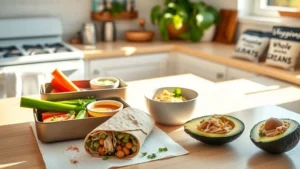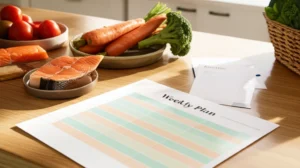So, you’re standing there on a busy evening, starving but tired, wondering… should I order takeout or just cook something quick at home? It’s a question we all know too well. I’ve been there—scrolling through delivery apps, tempted by that familiar neon glow of fast food banners, thinking, “Eh, I deserve this.” But then the bill arrives, and suddenly that “treat” feels like a dent in the wallet. Let’s dish about why take out vs cooking at home is not just a question of convenience, but also one that impacts your bank account and your health in ways you might not expect.
Chomping down on takeout is tasty and effortless, sure. But have you noticed how quickly those costs add up? I’m not just talking dollars here—think calories, time, and even your cooking skills. Spoiler: cooking at home pretty much wins, hands down, in most categories. If you’re curious about how to save money without sacrificing flavor or sanity, keep reading. You’ll find some real talk on what’s worth your time, your money, and your appetite.
Why Takeout Pinches?
What’s the Real Damage?
First off, let’s talk eating out vs eating at home cost. Studies cram this truth down our throats: eating out costs way more. Like, on average, maybe three times more expensive. I mean, a meal at a casual restaurant might set you back $15 or more per person, while home-cooked dishes usually hover around $4 to $6. That’s a difference that really adds up over time.
In fact, research from Top Nutrition Coaching shows that eating out costs nearly 285% more than eating in, which adds up to well over $13,000 more per year if you eat out regularly. That’s not pocket change—it’s a vacation or a nice emergency fund waiting to be funded.
Breaking Down the Bills
| Meal Type | Average Takeout Cost (Family of 4) | Home-Cooked Cost | Approx. Savings |
|---|---|---|---|
| Pizza | $35+ | $10 | $25 |
| Chinese Food | $45 | $12 | $33 |
| Burgers & Fries | $30 | $8 | $22 |
Plus, those takeout bills often sneak in delivery fees, taxes, tips, maybe even a bottled water or soda you didn’t need. Suddenly, what looked like a quick dinner out is a wallet workout. I once added up my monthly takeout spending… let’s just say, it was a shocker. I could have rented a fancy projector for movie nights instead!
Hidden Costs: More Than Money
Here’s something that doesn’t get talked about enough. When you grab a takeout meal, you’re often eating way more calories, salt, and unhealthy fats than you realize. Restaurants toss in all the flavor bombs and portion sizes designed to wow you—and yes, that’s part of their business model. While it tastes amazing, that doesn’t always mean it’s great for your health.
Cooking at home gives you the wheel to steer clear of the sodium tsunami and fat-fest. You control what goes into your food.
Cooking at Home Wins
More Than Just Money
Let’s be honest… cooking can sometimes feel like a chore. I get it—life’s hectic! But here’s the thing: cooking at home isn’t just cheaper; it’s often healthier and oddly satisfying. Studies show that home-cooked meals tend to be lower in calories, saturated fats, and sodium compared to takeout or dining out.
When you cook your own meals, you’re the chef, nutritionist, and budget controller all in one. You get to choose fresh ingredients and adjust recipes to suit your health needs—no surprises on the calorie count or salt content. (I can’t tell you how many times I’ve modified a recipe to cut back on oil or sugar and ended up with something way tastier.)
One More Reason to Love Home Cooking
Cooking together can actually bring people closer. Healthline points out how preparing food with someone can be a sweet way to reconnect. So next date night or family time, put on some music and chop veggies. It’s cheaper and better bonding than a buzzy bar or takeout alone.
Plus, home-cooking sparks creativity. Ever tried that “emergency steak” recipe from the 50s—ground meat molded with a carrot bone? It’s quirky, frugal, and surprisingly fun to try (shoutout to my Reddit pals for the nostalgia). Those kinds of kitchen experiments turn leftovers into tasty treasures and cut waste.
Let’s Talk Numbers Again
According to a study on eating out vs cooking at home statistics, people who cook regularly eat healthier overall, consume fewer calories, and save bundles. Cooking at home might feel intimidating at first, but it gets easier—you get faster, smarter, and less stressed with your food prep.
Save Time, Seriously?
Busy? Meal Prep to the Rescue
If you’re thinking “Sure, but cooking takes time—and I barely have any,” you’re not alone. The secret is smart planning. Batch cooking, meal prepping (hello Sunday sessions), and using kitchen gadgets can save tons of time on weeknights. Buy in bulk, cook once, eat twice or thrice—simple math, bigger savings.
Plus, an air fryer or slow cooker can be life-changing for quick, tasty meals with almost no effort. For example, frying up chicken at home with an air fryer can save you a crazy amount compared to buying it fried from a fast-food joint.
Tips for Time Crunchers
- Plan meals around your week—they say luck favors the prepared.
- Bulk-buy staples like rice, beans, frozen veggies, and proteins you can freeze.
- Cook once, eat twice—leftovers are your best friend.
- Try one-pan recipes or sheet pan dinners for easy cleanup.
The ‘Convenience’ Trap of Takeout
I’ll admit, nothing beats the luxury of not cooking after a long day. But delivery waits, bad drivers, cold food, and extra fees kind of steal the joy, don’t they? Cooking at home gives you control over timing, ingredients, and flavor. And you don’t have to awkwardly stand around the door waiting—or worse, tip for food you didn’t even want.
Budget-Smart Tips for Frugal Foodies
Stretching Your Food Dollars
Here’s a game-changer: buy ingredients that can be stretched across meals. For instance, one chicken breast can star in a stir-fry tonight, then shredded for tacos tomorrow. That’s some serious bang-for-your-buck.
The take out vs cooking at home pros and cons are pretty clear when you think in these terms. Takeout delivers convenience, but home cooking delivers savings and control.
Monthly Savings Example
Cutting back from three takeout meals a week to just one can save $150–$200 a month. That’s money you can funnel into your savings, a hobby, or just that fancy coffee maker you’ve been stalking on Amazon.
Healthy + Cheap? Yes, Please.
It doesn’t have to be all kale and quinoa (unless you want that). Simple, fresh ingredients like onions, garlic, tomatoes, and frozen greens add flavor and nutrition—and keep costs low. Remember, even small changes, like swapping soda for tap water or batch cooking a soup, add up.
Here’s a thought: I found a cool eating at home vs eating out essay a while ago that dives deep into how cooking shifts spending and health for the better. Definitely worth a peek if you love data and stories.
Final Thoughts: Start Simple, Save Big
Look, nobody’s saying you have to become a gourmet chef overnight. But reconsidering your regular food choices—from full takeout nights to a mix of cooking some and ordering some—is a fantastic way to stretch your budget and eat healthier.
The whole eating out vs eating at home pros and cons discussion boils down to how much you value your time, wallet, and body. Cooking at home mostly wins on those fronts. Think of it as investing in yourself, one meal at a time.
Why not give it a try this week? Choose one meal you usually take out and make it at home. It might take a bit longer, but I bet you’ll feel pretty accomplished when you sit down to chow—and see the savings pile up.
What’s your favorite “too good to cook” takeout? Maybe we can hack it together so you get the flavor with less money spent. Drop your thoughts or recipes—I’m all ears!
Remember, small steps every day lead to big savings down the road. Here’s to cooking smarter, saving more, and enjoying every bite.

